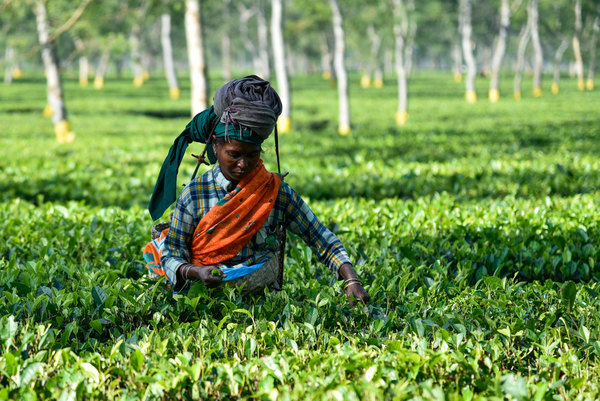24 Hours of Reality
24 Presenters, 24 Time Zones, 13 Languages, 1 Message: the climate crisis is real and we know how to solve it. Read on to find out more about this event.
Want to know your individual carbon footprint? Here is a quick carbon calculator tool
I found an easy and fun to use carbon footprint calculator in the Guardian online, which I thought I should share with handpicked readers. The carbon calculator tool is also available in the 10:10 webpage, an organisation which aims to inspire and support people and organisations to cut their carbon emissions by 10% in a…
Land sparing vs. land sharing: how best to reconcile food production and biodiversity?
In a world of climate instability and ever-growing population, global food security is becoming an increasing concern. How do we feed a population of some seven billion (set to reach 9 billion by 2050) without losing even more of our precious biodiversity by diverting ecosystems such as forests and grasslands to cropland? Do we squeeze…
Whoever said that science and religion didn’t mix?
Hello, here is a blog from our guest blogger Rosaline Hulse. Rosaline studied Human Biology at the University of Birmingham and is currently working for a renewable energy trade association in London. With a particular interest in engaging the public in scientific debate and communicating science in an accessible format, especially in relation to climate…
Pop forest to compensate for festival’s carbon footprint
Rock festivals, like many other activities produce carbon emissions, for example, from people travelling to the festivals, the performers transport of equipment and the energy used in lighting and instruments used, to name just a couple of emission sources, and not forgetting the amount of pollution incurred too. Are organizers and participants doing anything to…
Ever wondered how much carbon is stored in the vegetation of a whole city?
The UK government has recently set a target of an 80% reduction in greenhouse gas emissions by 2050, based on 1990 levels. Carbon storage within biomass and soil has become a common feature of governments' policies to mitigate climate change. Many studies have been carried out recently on the carbon sequestration of forests, wetlands, soil and…
Ever wondered how much carbon is stored in a tree?
Photo courtesy of Google Images. As trees photosynthesise they use carbon dioxide (CO2) from the atmosphere with water from rain or irrigation and nutrients from the soil to form carbohydrates, which make up the tree’s biomass, but how much carbon is made by a tree in this process? Researchers at Ecometrica have worked it out!
Building a low-carbon world: the sixth industrial revolution
To avoid destroying our relationship with the planet, we'll need to make radical changes and revolutionise the way we use energy and the type of energy we use. Are policies and people in networks and communities what will ultimately make it happen? Read on to learn more about the Annual Dorchester Lecture, which was delivered…
Why Washing Your Vegetables and Hands May Not Protect You from E. coli, Staphylococcus, Salmonella…?
Following the recent outbreak of E. coli food poisoning in Germany that claimed at least 37 lives as of 14 June 2011 and still counting, numerous articles have been written, but many fundamental questions still remain unanswered. As you will remember, contaminated Spanish cucumbers were initially blamed for the outbreak of E. coli infection, which prompted the Spanish…
Recent developments in the world of biofuels
Opinions on the use of crops for biofuel and bioenergy continue to be polarized – are they a ‘good thing’ or not? When are they a ‘good thing’? Who benefits? How do you measure the impacts and their interactions at a local, national and international level on food security, land resources, water, greenhouse gas emissions,…


